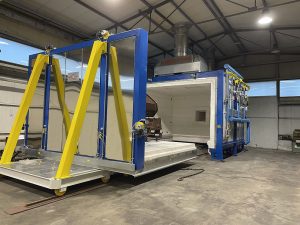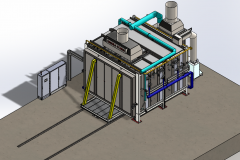 SOLUBILISATION HEAT TREATMENT
SOLUBILISATION HEAT TREATMENT
Solubilisation is the heat treatment reserved for austenitic steels (stainless and duplex steels) (the solubilisation process is applied in slightly different forms to other non-ferrous metal alloys such as aluminium-copper).
This heat treatment consists of a heating and holding phase at a high temperature between 1050 °C and 1100 °C followed by rapid cooling in air or water.
HEAT TREATMENT FOR STRESS RELIEF
Generally, when we process a material, machining, cutting and plastic deformation cause an accumulation of compressions that may cause unwanted dimensional changes. Therefore, in order to minimise post-processing compression and the risk of dimensional changes, the component can be stress relieved, which usually takes place after rough machining but before final finishing at a temperature of between 550 °C and 650 °C for steels, 150-180 °C for carbon or low alloy steels and 170-210 °C for case hardening steels. This is followed by a slow cooling phase in a furnace or in the air, lasting one, two or more hours, precisely to avoid stresses due to the sudden change in temperature, which often happens with large components.
The purpose of stress relief is to reduce internal stresses without significantly altering hardness.
These treatments are performed on products for a variety of sectors, including Oil & Gas, Mechanical, Naval, Nuclear, Aerospace and Energy.
PLANT DESCRIPTION:
- stress-relieving treatments from temperatures of 150 up to 700°C. Thanks to an efficient flue gas recirculation system at 500°C there is a high degree of temperature uniformity;
- solubilisation treatments at 1040°C with forced rapid cooling, controlled and managed according to the curve within the oven chamber;
- No. 8 control zones in the macaw and No. 8 contact probes in the workpiece, in the oven it is able to manage the powers according to the load to be treated;
- very high degree of uniformity +/- 5°C during ascent and +/-2°C during stalls;
- control and management of internal chamber pressure;
- management and control of oxygen in the chamber via a lambda probe;
- The entire system is controlled by a Siemens 1500 PLC;
- remote control, remote assistance and simple, intuitive interface (INDUSTRIA 4.0);
- high-speed burners, self-recovery burners, hydrogen burners, etc.
- AMS2750 F;
- optimised consumption.

